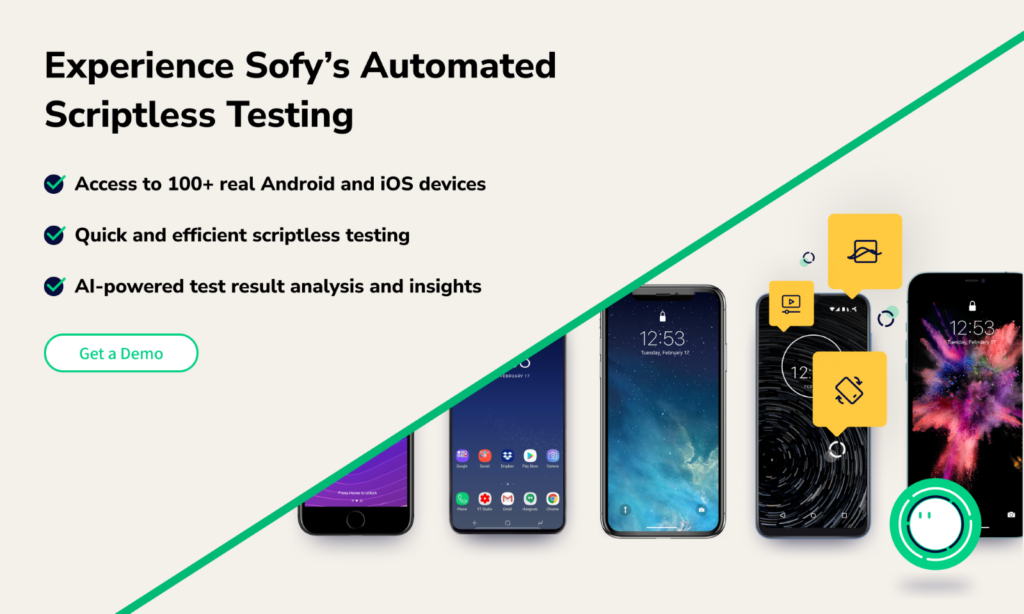Quality assurance testing is a cornerstone of software development, ensuring that applications are free from defects and perform as expected. Traditionally, bug detection and reporting have been labor-intensive, relying heavily on manual effort. However, the introduction of Artificial Intelligence (AI) is transforming these processes, making them more efficient and effective.
This blog explores the current bug detection and reporting processes, how AI is revolutionizing these tasks, AI’s limitations, and how Sofy can help detect and report mobile app bugs.
Manual Process of Bug Detection and Reporting
Without AI, bug detection and reporting involve several manual steps that can be time-consuming and prone to human error. Increased time spent on bug detection also results in spending more money and resources, as shown in the figure below, taken from a 2020 study on the relationship between manual bug management and budget.

Here’s a breakdown of the typical manual testing process:
Manual Testing
- Test Planning: Testers create detailed test plans and cases to cover various aspects of the application.
- Execution: Testers manually execute these test cases, interacting with the application as end-users would.
- Bug Identification: During execution, testers observe and document any anomalies, crashes, or unexpected behaviors.
- Reproduction: Testers attempt to reproduce the bug to confirm its existence and understand its context.
Bug Reporting
- Documentation: Testers document the bug, including: steps to reproduce, the expected vs. actual results, screenshots, and any relevant logs.
- Submission: The bug report is submitted to a bug tracking system (e.g., Jira, Bugzilla).
- Review and Assignment: Developers review the bug report, assign it to the appropriate team member, and prioritize it based on severity and impact.
How AI Can Automate Bug Detection and Reporting
AI offers several capabilities that can streamline and enhance the bug detection and reporting process:
Automated Testing
- AI-Powered Test Generation: AI can analyze the application’s code and usage patterns to automatically generate comprehensive test cases, covering more scenarios than manual testing.
- Continuous Testing: AI testing tools can run these tests continuously, identifying bugs as soon as they are introduced.
Anomaly Detection
- Pattern Recognition: Machine Learning (ML) algorithms can analyze application logs, user behavior, and performance metrics to identify anomalies that indicate potential bugs.
- Real-Time Monitoring: AI systems can monitor the application in real time, flagging unusual patterns that might signify bugs.
Self-Healing Scripts
- Dynamic Adaptation: AI can create self-healing test scripts that adapt to minor changes in the application’s UI or functionality, reducing the need for constant manual updates.
- Reduced Maintenance: Self-healing scripts produced by AI ensure that test scripts remain valid even as the application evolves.
Automated Bug Reporting
- Natural Language Processing (NLP): AI can use NLP to automatically generate detailed bug reports based on the detected anomalies, including steps to reproduce, severity, and impact.
- Integration with Tracking Systems: Many AI testing tools can integrate with bug tracking systems like Jira to log detected bugs automatically.
Limitations of AI in Bug Detection and Reporting
While AI offers significant advantages in automatic bug detection, it also has limitations. These limitations include the following:
- Training Data Dependency: AI models require extensive and high-quality training data to accurately identify bugs. Inadequate training data can lead to false positives or missed bugs.
- Complexity of Human Judgment: Some bugs require nuanced human judgment to identify and understand their impact, which AI might not fully replicate.
- Unpredictable Scenarios: AI may struggle with edge cases or unique scenarios not included in the training data.
- Complex Interactions: Applications with complex interactions and dependencies might present challenges for AI systems to understand and test fully.
- Skilled Professionals Required: Integrating AI into your existing CI/CD pipelines can require skilled professionals to set up and operate properly.
- AI Biases: AI is constantly influenced by biases, since it’s heavily reliant on existing data to train it. For example, if AI is trained with user data from one specific demographic, then that could skew the testing done by the AI.
How Sofy Can Help with Detecting and Reporting Mobile App Bugs

Sofy is a powerful AI-driven platform that enhances mobile app testing through automation and intelligent insights. Here’s how Sofy can assist:
- Testing on Real Devices: Sofy offers a cloud-based device lab with over 100 real Android and iOS devices, allowing comprehensive testing across various configurations.
- Scriptless Automation: Users can create automated test cases without writing code, making it accessible to non-technical team members.
- Detailed Test Reports: Sofy offers detailed reports of all manual and automated tests.
- Integration with Jira: Seamlessly integrate your Sofy account with Jira, allowing you to create Jira tickets directly from the platform.
Interested in seeing Sofy in action? Get a demo today!
Using AI for Bug Detection: The Future of Quality Assurance
AI is revolutionizing the bug detection and reporting field, making the process faster, more accurate, and less reliant on manual effort. While there are limitations to AI’s capabilities, advancements continue to enhance its effectiveness.
Platforms like Sofy are at the forefront of this transformation, providing powerful tools to help QA testers and software developers ensure their mobile apps are robust and reliable. By leveraging AI-driven solutions, teams can focus on delivering high-quality software with greater efficiency and confidence.









